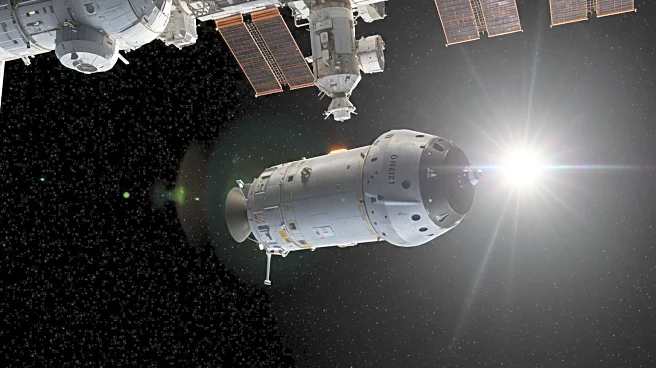Rapid Read • 8 min read
NASA has confirmed the presence of a significant anomaly in Earth's magnetic field, known as the South Atlantic Anomaly (SAA), which is expanding across South America and the South Atlantic Ocean. This anomaly represents a region of lower magnetic intensity, posing challenges for satellites and spacecraft due to increased exposure to charged particles. The SAA is linked to deep-Earth structures and flows of molten iron in the outer core, affecting the local magnetic field strength. The anomaly's behavior is correlated with reversed-flux patches near the core-mantle boundary and the African Large Low Shear Velocity Province, a dense mantle structure beneath Africa. As the SAA evolves, it is drifting and splitting into two lobes, complicating forecasting and risk maps for spacecraft routes.
AD
The expansion of the South Atlantic Anomaly is significant for the aerospace industry and satellite operations. The anomaly increases the risk of instrument glitches and hardware issues for satellites passing through the region, necessitating careful planning and operational adjustments. For instance, non-essential systems are often powered down during passages through the SAA to prevent data corruption or hardware damage. The International Space Station's external instruments are particularly vulnerable, with occasional resets reported due to SAA crossings. This development underscores the need for ongoing monitoring and adaptation of satellite missions to mitigate risks associated with the anomaly.
Agencies are expected to continue integrating multi-satellite data with core-field simulations to update global models like the International Geomagnetic Reference Field. These models are crucial for forecasting the anomaly's behavior and planning satellite routes. While the SAA's current behavior is unusual, researchers emphasize that it is not indicative of an imminent geomagnetic pole reversal, which occurs over hundreds of thousands of years. Mission designers will likely incorporate SAA constraints into observation schedules and instrument duty cycles well in advance to ensure operational safety.
The South Atlantic Anomaly highlights the complex interactions between Earth's internal structures and its magnetic field. Understanding these interactions is crucial for predicting future changes in the magnetic field and their potential impacts on technology and infrastructure. The anomaly also raises questions about the long-term stability of Earth's magnetic shield and its ability to protect against cosmic radiation, which could have broader implications for climate and environmental conditions.
AD
More Stories You Might Enjoy










